No wall can separate a Gulf Fritillary from its host plant, the passionflower vine (Passiflora).
The Gulf Frit Agraulis vanillae), an orangish-reddish butterfly of the family Nymphalidae, fluttered over our six-foot fence, heading straight for the passionflower vine. What's a little height when there are eggs to lay?
The showy butterfly's silver-spangled underwings glowed in the sunlight.
Its history glows, too. It first appeared in the vicinity of San Diego in the 1870s, according to noted butterfly researcher Art Shapiro, professor of evolution and ecology at the University of California, Davis. He's been monitoring the butterflies of central California for four decades and maintains this website.
From San Diego, “it spread through Southern California in urban settings and was first recorded in the Bay Area about 1908," says Shapiro. "It became a persistent breeding resident in the East and South Bay in the 1950s and has been there since.”
We remember hearing about the butterfly in the Sacramento/Davis area in the 1960s. Shapiro says it “apparently bred in the Sacramento area and possibly in Davis in the 1960s, becoming extinct in the early 1970s, then recolonizing again throughout the area since 2000.”
Last year, at our home in Vacaville, the caterpillars were so thick on the vine that they skeletonized it. Killed it, they did. Deader than the proverbial doornail or a nail hammered into the fence. But not to worry--we have more plants this year for them.
Watching them flutter over the wall and lay their eggs on the Passiflora is a good thing. Soon we'll see males chasing them like winged ballet dancers, eventually providing us with even more Gulf Frits. You can never have too much of a good thing. Not ever.
Attached Images:
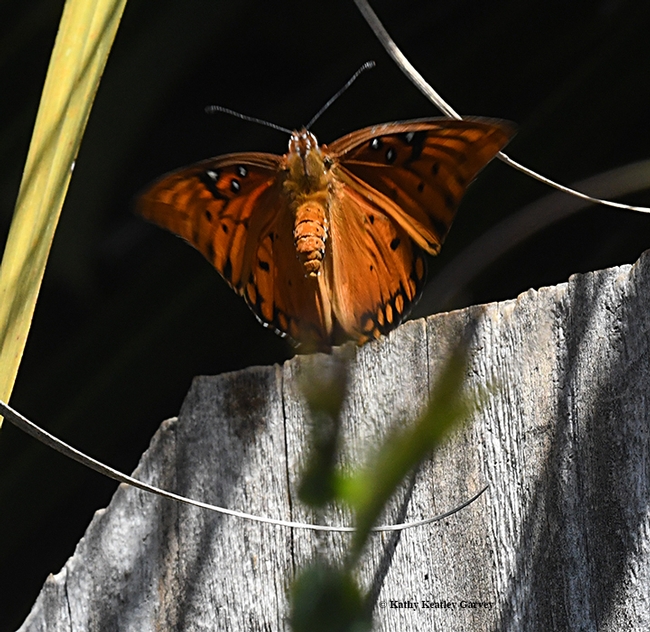
Gulf Fritillary (Agraulis vanillae) soars over a fence to lay its eggs on its host plant, the passionflower vine. (Photo by Kathy Keatley Garvey)
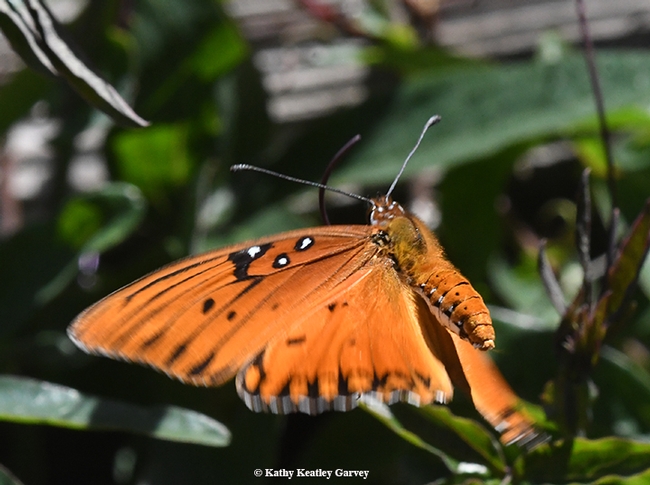
The Gulf Fritillary checks out the host plant. (Photo by Kathy Keatley Garvey)
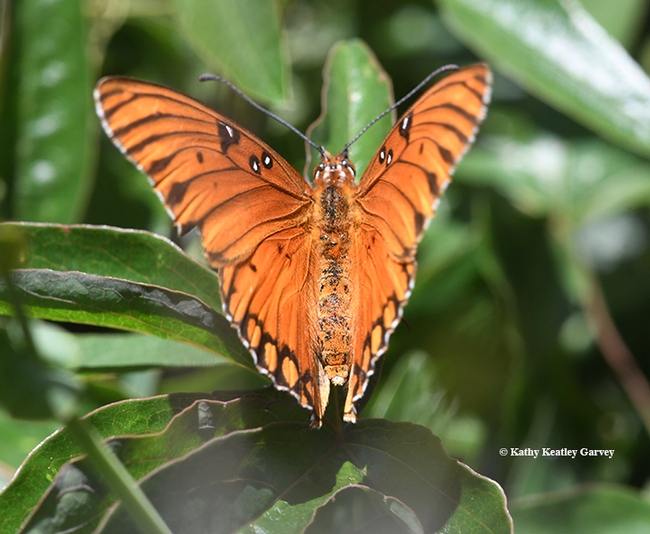
The Gulf Fritillary maneuvers its wings. (Photo by Kathy Keatley Garvey)
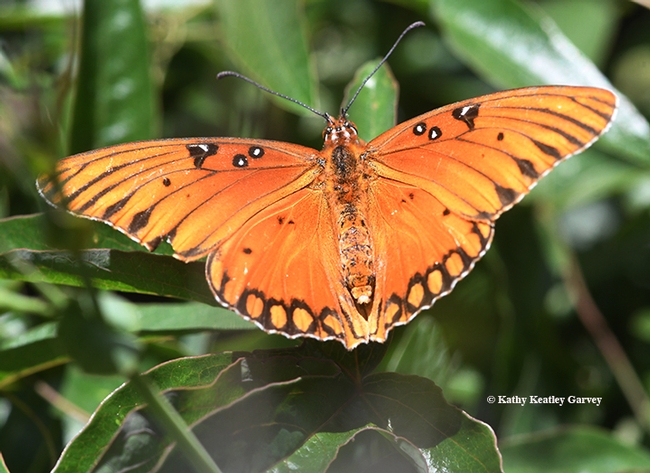
The Gulf Fritillary spreads its wings. (Photo by Kathy Keatley Garvey)
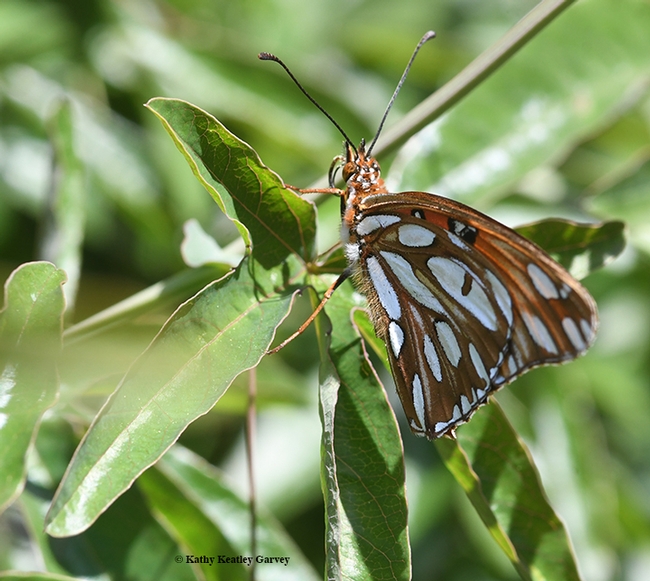
Sideview of a Gulf Fritillary showing its silver-spangled underwings. (Photo by Kathy Keatley Garvey)